Cover Story – USGA’s Course Rating System
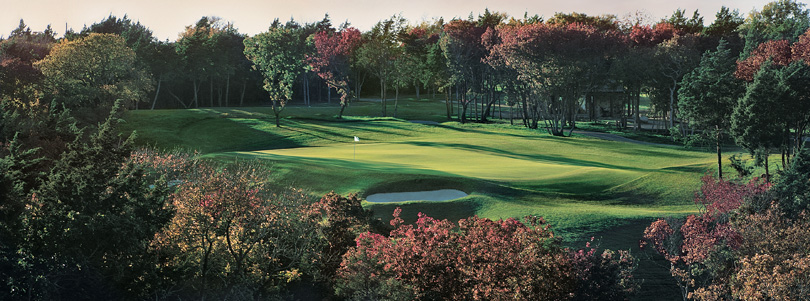
We’ve all seen those words RATING/SLOPE on our scorecard before, but what exactly do they mean and where do those numbers come from? Are they derived by the course itself, or do they come from some sort of governing body? How difficult can courses get? How do these numbers determine what I might shoot at say Bethpage Black, or the Ocean Course at Kiawah Island? You’ve undoubtedly heard of some of the toughest tracks in the nation, but where do they rank? And just how tough are local tracks like Maridoe, or the Dye Course at Stonebridge Ranch, or Dallas National? AVIDGOLFER Magazine has done the homework, spoken with the experts, and now we take a closer look at the ratings process, the men and women behind it, and where your favorite local 18 might rank among the pantheon of demanding courses, not only in the state of Texas, but across this great land.
Course ratings and slope each have their individual history. One goes back almost 150 years, the other, just a couple decades. Just as the game of golf did, course ratings originate in Great Britain, and the first “ratings” were done using terms you are going to be very familiar with. The term “par” was originally coined for stocks. Stocks were often referred to based on performing at or below their “par figure”. Par was eventually used in 1870 as Young Tom Morris won a tournament at Prestwick shooting two strokes over 49, which was deemed the number of strokes that should be required, or “par” for the course. The 51 shots Morris took was called “two over par”. The term stuck, and we still use it today. So, in a primitive way, “par” was the first ever way to actually rate a courses difficulty.
Fast forward to 1911, when the first USGA ratings system was implemented. It was proposed by Leighton Calkins, who at the time, was an officer of the Metropolitan Golf Association and served on the USGA Executive Committee in 1907 and 1908. Calkins’ proposal was that par ratings be based on the play of Jerome Travers, who was the United States Amateur champ in 1907, 08, 12, and 13, and then went on to win the United States Open in 1915.
Rating courses based on the expected score of the national amateur champion became the standard. One element of the ratings that frustrated Calkins was the USGA’s decision to allow clubs to determine their own ratings, Calkins believed there to be no way the clubs themselves could be unbiased when determining these ratings. Calkins made his point, and official USGA Course Ratings were issued for the USGA by regional golf associations, just as they are in the modern day. Tweaks have been made over the years as technology has evolved, and there are more determining factors now, but the basic premise remains as it was over a hundred years ago.
The slope, which is the three-digit number almost always seen on the scorecard next to the course rating, came along much later. The brain child of Lt. Commander Dean Knuth, this concept improved course ratings by including a numerical rating of ten characteristics for each hole. This was a way of improving on the already distance based ratings. The method used some elements of decision theory and was intended to be a systematic, quantitative approach to course rating. This 1977 innovation is the basis for the present USGA system of rating courses, but is geared more toward the bogey golfer, while the rating is geared to test the scratch player.
In January 1990, every golf association in the United States adopted this USGA Course Rating System to assign a rating to their courses. In the years since, other countries have followed suit and use these parameters. Great Britain, Korea, China, India, Ireland, France and Germany are just a small portion of those countries that use this system.
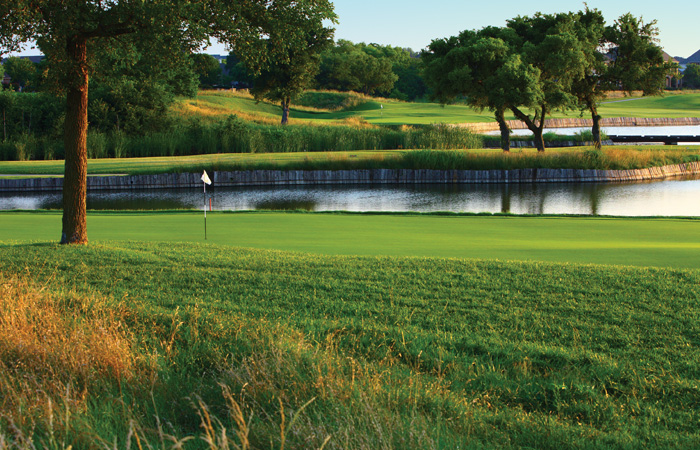
Stonebridge Ranch – Dye Course
As this piece began to take shape, it quickly became clear that there was far more involved in coming up with these numbers than just taking a couple variables and plugging them into some kind of computer program. There is a distinct human element involved in the process, that takes place before any numbers can be crunched by some microprocessor.
To really gain an understanding of how these ratings develop, we must first take a look at and try to process the USGA’s Course Rating System Guide. This manual is developed by the USGA and is the bible on how to evaluate courses based on the parameters they’ve set. To begin with, there needs to be a basic understanding of the caliber of golfers that are used to determine how tough a particular course can play. The scratch golfer has always been the gold standard by which amateurs measure their game. A “scratch” is essentially someone who carries a 0 handicap on any rated course. There is a common misconception that the guys you see on TV are scratch golfers. In reality, Web.com and PGA TOUR guys are plus handicaps. For example, when Tiger Woods went on his tear in 2000, his handicap was said to be an almost inconceivable +12, and it never fell below +10 for the entire season. Meaning if you take a course with a rating of 73 (about average), in 2000, Tiger would’ve carved that course up to the tune of a blistering 61. Easy to see how he won the US Open that year by a comical 15 shots. Clearly there’s only one Tiger, but most tour guys are at worst around a +6.
For the amateur, most would agree that single digit handicaps are the benchmark for an above average player. Anywhere from -9 to -1. Someone that shoots anywhere from 72 to 82 on a regular basis. This should help give you some perspective of just how good some of the tour guys actually are.
The USGA also uses a standard bogey golfer to help determine ratings. The bogey golfer numbers are used primarily in connection with slope ratings. A bogey golfer is a player who carries a 20 handicap on a course of standard difficulty. Essentially, this is someone who shoots around 90-95.
In addition to using handicaps, the USGA also has calculated averages that they use to gauge how far a scratch and bogey golfer hit the golf ball. According to the guide, a scratch golfer hits a driver 230 carry with a roll of 20 yards, for a total of 250 off the tee. A bogey player is shorter, carrying a driver 180 with a roll of 20 yards, for a 200-yard total distance. Of course, we all know players that hit it much farther than this.
Scott Hovde, who is the USGA Director of Course Rating and Handicap Research, has been with American golf’s governing body for 17 years detailed why these standard distance numbers haven’t been updated to reflect the improvements in technology.
“We’ve thought about it and studied it for 20-plus years. At the end of the day, we really don’t care how far somebody that is defined as a scratch golfer hits the ball, we just want a definition we can use on every golf course. And those numbers are actually still pretty good. We look at a scratch golfer at the club level, and those numbers are still pretty consistent. And in the end, if we up those standard numbers, we have to lower the ratings, and then player’s handicaps are higher. The ratings drop, everyone’s scores stay the same, and their handicaps would go up.”
Although the use of these average numbers gives a baseline for distance, it also helps reinforce the one undeniable truth about the modern game. Length matters. Hovde estimates about 85 percent of rating is based on how long the course plays. Inevitably, the longer the holes, the harder the course. The maximum slope you will see on any course is 155, and when you see that number, it means the course is long. Very long.
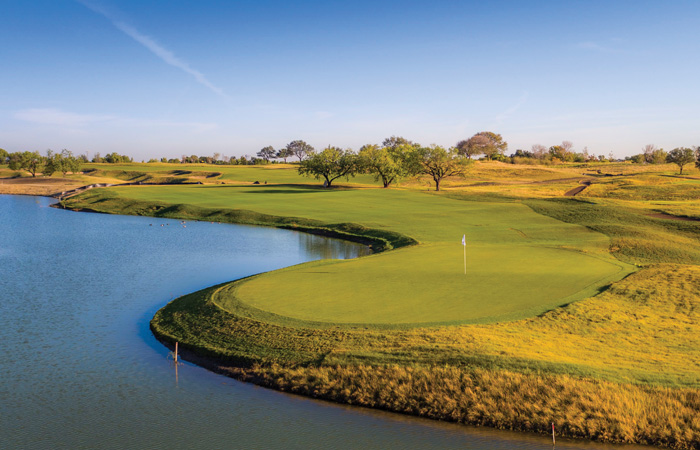
Maridoe Golf Club
“Length is the one thing that the player absolutely can’t avoid. They can avoid bunkers, water, and all that, but they can’t avoid the length.” Hovde Said. “They have to play the hole from tee to green, and a hole that is 450 is going to be more difficult than one that is 350. You know, there are courses that don’t make these high course rating lists because they just don’t have the length. Take Pine Valley or Merion for example. Pine Valley is 7,100 yards, but it’s one of the most difficult tracks out there for its yardage. Merion is the same way. It’s only like 6,900 yards. There’s something about being able to make a 390 yard par-4 diabolical.”
If you look at the 76 courses in America that are rated at 77 or over, 25 of them play at 7,700 plus yards, and 7 of them play longer than 8,000 from the back tees. The longest on file with the USGA is Ross Bridge in Alabama, which from the tips, plays a back-breaking 8,191 yards. I think I speak for everyone not named Brooks Koepka when I say I’m going to have to pass on that nightmare.
Speaking of Koepka, now would be an appropriate time to remind our readers that the longest major championship in the history of the game played at 7,741 yards. That major was contested in 2017 at the US Open at Erin Hills. A championship Koepka won with a score of -16. The runway wide fairways and no wind meant the tour beasts still didn’t have much trouble with a course that played close to 7,800 yards.
Though courses continue to grow longer and more challenging, Hovde does estimate handicaps overall have improved by a stroke or two over the last two decades. A number of factors could be the reason for the improved play. Technology, better overall course conditions and greens, or it could be that golfers are just devoting more time to practice and fitness than they once did. Simply put, there are just better players out there now than 20 years ago.
Now that we have the overall baseline set for the caliber of players the USGA uses to gauge these ratings, we must take a look at how the courses themselves are evaluated from tee to green.
Hovde, who has been rating courses for his entire career, first in New Jersey, and then for the USGA gave AG some insight regarding the process used.
“There’s some prep work involved. We want to make sure the measurements are correct before we ever get to the course. Once the team arrives, it’s kind of like playing. You go out to a specific landing zone. Where you expect a golfer to hit their tee shot. Where a scratch golfer would hit their shot and a bogey golfer would hit their shot.” Hovde said. “From there, we start measuring where their second shots would be and measure to obstacles. Hazards left, right, to carry bunkers and water. These are almost always objective measurements. They are then factored into tables, and we get what are called obstacle ratings. The higher the obstacle number is, the higher the course rating and slope are going to be.”
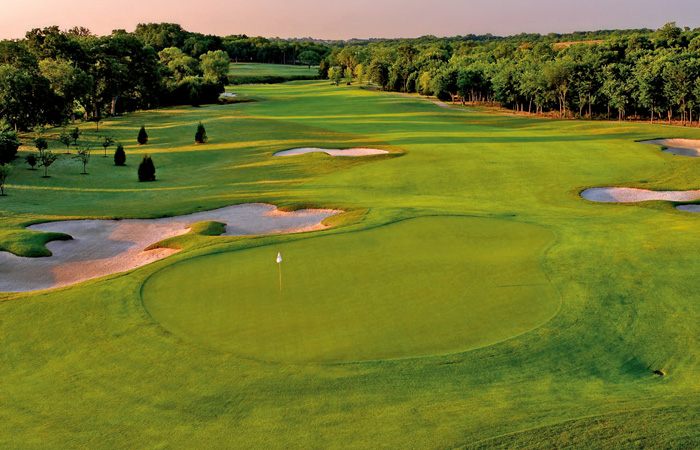
TPC Craig Ranch
These ratings teams spend between 4 and 5 hours at each property measuring yardages and then take into account factors such as elevation (a 7,500 yard course in Colorado will play much shorter than one at sea level), additional roll out based on topography, number of trees and their density, and even the psychological toll the difficulty of a course might have throughout the round… i.e. the harder a course is, the more mentally whipped you become, and your score might suffer.
Weather is clearly another very important component to rating courses properly. Wind can be the great equalizer on any course, much less some of the monster tracks detailed in this piece. These teams make every effort to rate these courses during peak season, that way the trees are filled-in, the rough isn’t dormant, and the course is in the best condition possible. Wind is factored in, and a yardage adjustment is made based on what the average breezes are at that particular course. On some of the coastal courses, where winds can routinely pick up, these adjustments can really make a difference in the final rating.
Over the course of the survey, raters collect 360 total pieces of data. They factor 10 obstacles per hole, do it for both scratch and bogey golfers over the entire 18. Once the data has been collected, it’s fed into a computer, and voila, there’s your rating.
DFW has several courses that can give player’s all they want if they choose to be bold and play from the back tees. Most notably, Maridoe Golf Club, which tips out at 7,900 yards, and carries a rating of 80.8. However, the course is currently undergoing some renovations that should soften that rating just a touch. The Dye Course at Stonebridge (77.5), Craig Ranch (77.5), and Dallas National (77.0) also boast ratings at 77.0 or higher. Plenty to bring the scratch player to their knees and make the bogey player contemplate taking up bowling.
Kelly Kilgo, who is the Senior Director of Membership Services and Course Rating for the Texas Golf Association spoke with AG for this piece, and was able to shed some more light on the process used to rate these courses, and the way these numbers impact new players of a particular course.
“When you’re talking about an average handicap player, they’re really only going to hit their score about 20% of the time. Another thing course ratings try to do, and I think this is tough for the USGA, but you’re trying to get a rating that isn’t just for members, but for outside players.”
This essentially means the USGA does their best to rate courses based on what outsiders might shoot when they play these courses. Not just members, although, Kilgo did admit it’s tough to keep the playing field even when someone gets to play the course over and over versus just once or twice.
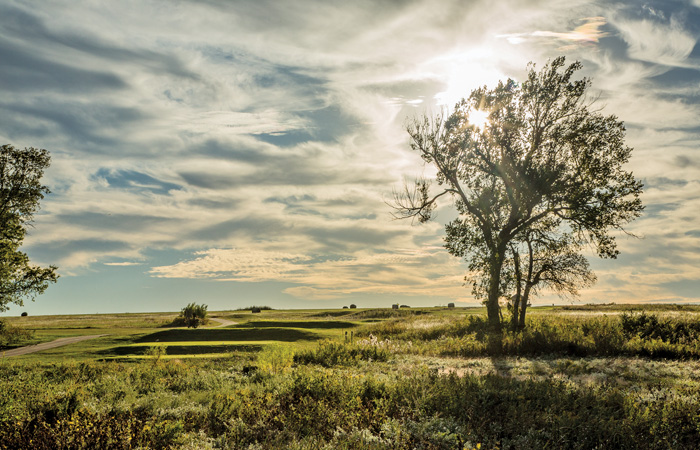
The Bridges Golf Club
At the end of the day, courses are as difficult as you want to make them. For example, the Dye Course at Stonebridge Ranch has five other sets of tee boxes. The white tees, which on the scorecard are recommended for 13+ handicaps, play just 6,304 yards, which is far more manageable than the 7,346 tips. Maridoe, which is a staggering 7,900 yards from the “plates” can be softened up by moving forward a couple boxes and decreasing the yardage on forced carries. If you want to challenge your game, there are plenty of courses that can give you a mega-challenge, but if you’re looking for some good ol’ fashioned fun and a few laughs, do your game a favor and play a tee box that is best suited to your game. And now that you know what these numbers mean and how they’re calculated, it will much easier to determine which courses and tees maximize your chances to fire that number that has always eluded you.



